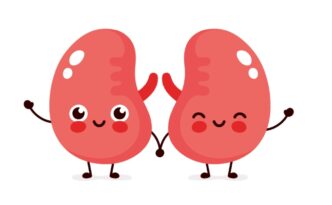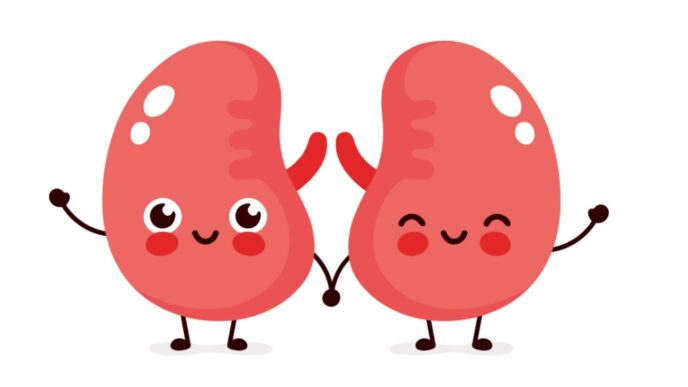The Butterfly Children
April 29, 2022 Return
Children who have epidermolysis bullosa (EB for short) go by names such as ‘cotton wool babies’ and ‘crystal skin children’. Closer to home, we have opted for the term ‘butterfly children’. While these names sound like something straight out of a children’s storybook, their ‘cutesy-ness’ belie the dangerous nature of this skin disorder.
Those of you who do not have any inkling of what EB is may be thinking, ‘Why haven’t I heard about this if it’s such a serious condition?’ Consultant Paediatrician Dr Leong Kin Fon clarifies, “EB is extremely rare. The World Health Organization reports that for every 1 million Malaysians, only 10 have EB. This means there are now approximately only 300 Malaysians with EB.”
Epidermolysis bullosa explained
So, what is EB really? And why are kids with EB called ‘butterfly children’? “The term ‘butterfly children’ came about because the skin of an EB patient is very tender and fragile like a butterfly’s wings,” Dr Leong explains. “Our skin is divided into 2 layers – the epidermis and the dermis. Normally, situated between these 2 layers are anchor-like structures which prevent them from moving independently from each other. But in individuals with EB, these ‘anchors’ are either relatively fewer or not present at all. As a result, any movement (eg, scratching, rubbing or injury) that causes trauma or friction between the layers can induce painful sores and blisters.”
Elaborating further, he says, “The amount of blisters present depends on the severity of a patient’s EB. Some will get only a few blisters but others can experience a lot. Blisters typically form on the hands and feet but they may also appear on the inside of the oral cavity like the mouth, stomach and oesophagus (the tube which connects the mouth to the stomach). Those with more severe forms of EB also experience blistering in other body parts including the nails, teeth and hair.”
And then, there were three types
Delving into the various kinds of EB, Dr Leong says, “There are 3 main types: EB simplex, dystrophic EB and junctional EB. International data shows that out of these 3, the most common one is EB simplex in which blistering affects the epidermis (upper layer of the skin). Out of 100 patients, 90 have EB simplex.”
What about Malaysian data, then? He says, “I work in a paediatric ward so most of the cases which I come across are either dystrophic EB or junctional EB. For both dystrophic EB and junctional EB, blistering occurs in the basement membrane of the dermis (deeper layer of the skin). Junctional EB affects the middle part of the basement membrane whereas dystrophic EB strikes at the lower part of the basement membrane. Junctional EB is the rarest of the 3.”
It runs in the family
If you are a parent, you may now be wondering how to protect your child from this dreaded condition. However, it is not something which can be prevented like the common cold or measles. Dr Leong says, “EB is a genetic disorder. It’s most often inherited from parents; the parents either have EB or are carriers of the faulty gene. But sometimes – though, very rarely – the genetic fault occurs spontaneously.”
Does that mean people with EB should avoid starting a family? He advises, “Well, it boils down to the type of EB. In the case of EB simplex, the symptoms are milder so I wouldn’t go as far as to stop couples (where one or both partners have EB simplex) from having kids. This is because even if their child does end up with EB simplex, the condition is still manageable with the appropriate lifestyle modifications.”
What about couples with more severe forms of EB, then? “For these couples, I’d recommend genetic screening. There are prenatal tests such as amniocentesis which can test the unborn child for EB at the 11th week of pregnancy. If the child is confirmed to have EB, these couples are then offered counselling. We have professionally trained counsellors who are more than ready to assist and advise them on how to cope.”
It’s complicated
Touching on the complications of EB, Dr Leong recalls, “It differs from one person to another. I have friends in Singapore who never showed any symptoms of EB until they enrolled for military service. Blisters only began developing on their bodies especially their feet because of the intense physical training. For people like them, EB isn’t much of a hindrance unless when performing physical activity.”
However, things aren’t always so easy for other EB patients. “Blisters which develop on the skin of children with severe forms of EB don’t heal as quickly – hence, increasing their risk of infections such as sepsis which can lead to organ failure.”
Sepsis aside, other complications which can arise include:
Deformed limbs
“The toes or fingers of someone with severe EB can fuse due to excessive scarring. Should that happen, surgery is necessary to remove the scar tissue and to restore mobility.”
Malnutrition
“Scarring doesn’t merely occur on limbs. Over time, scarring may also develop in the oesophagus. I’ve had patients in their early teens whose oesophagus had narrowed over the years so much so that they are incapable of swallowing anymore. We have to resort to connecting a feeding tube to their stomach – a procedure known as gastrostomy. This way, patients can be fed directly into their stomach.”
Death
“Severe forms of EB do increase one’s mortality risk. For instance, babies who are unable to breathe and eat normally due to excessive blistering are likely to die in childhood.”
‘Is there a cure?’
Dr Leong is no stranger to this question as it is no doubt on the mind of every parent with a child who has EB. “It’s the question that I get asked most frequently.” And his answer is the same every time. “There isn’t a cure for EB but that doesn’t spell the end. EB is incurable but it is manageable,” he says encouragingly.
“The main goal of EB treatment is to avoid blisters and its related complications. This is why parents or caregivers need to be well-versed with the proper methods of wound care,” he stresses. He cites some examples:
- Use silicone dressing on blister-induced wounds instead of a normal dressing as the latter can further aggravate the wounds
- Apply substances with strong hydrating properties like petroleum jelly to keep the wound area constantly moisturized
- Puncture blisters with a sterile needle to stop blisters from spreading.
In addition to wound care, ensuring your child has regular check-ups is another aspect of EB management. “Regular visits to the dentist are important to check for blisters or irritation in the child’s mouth.”
“Wound care is tedious and can seem like a lot to take in at the beginning but remember that your child’s doctor is always there to guide you. In time, you’ll get better at taking care of your child,” he assures.
‘You aren’t alone’
“Living with EB can be very stressful for both parent and child. As if the physical suffering brought on by EB isn’t enough, they have to deal with stigma and social isolation as many people still have the misconception that if they were to touch someone with EB, they will be infected with it. Then, there’s also the financial burden that comes along with treatment. Bandages and dressings can be expensive,” says Dr Leong.
This is why patient and caregiver support is so vital. Dr Leong who is also President of DEBRA Malaysia, a non-profit organization which offers support to the EB community by funding research and by providing free services for patients who are in need, advises, “EB is a life-long disease. Although it cannot be cured, it can be controlled with proper care. The blisters can actually decline over the years if they are tended to accordingly. Therefore, don’t be afraid to seek help if your child has EB. Talk to your child’s paediatrician about your concerns or you can get in touch with DEBRA Malaysia. We at DEBRA Malaysia will do our best to help you and your child. Remember, you aren’t alone.”
Should you have enquiries, you can contact DEBRA Malaysia at:
Tel : + 603 9283 2868 or +6012 3913328
Email : [email protected]
Address : D-5-1, Block D, Menara Uncang Emas, Jalan Loke Yew, 55200 Kuala Lumpur.
If you like this article, do subscribe here.









